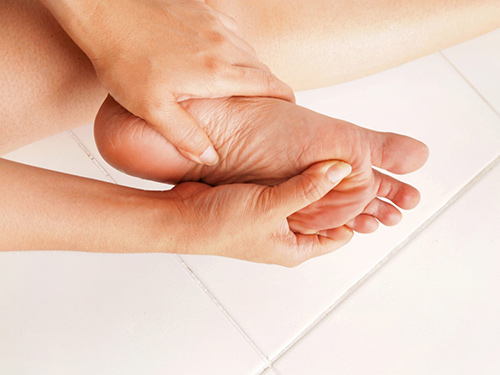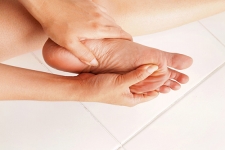
The foot is intricate, with many bones, joints, and muscles. This complexity makes the foot at risk for inflammation and injury, which can impact daily life due to pain and mobility problems.
Achilles Tendon Injury
The Achilles tendon creates a link between the calf muscles and the heel. The Achilles tendon puts up with a lot of stress from daily activities, and this stress can create a condition called tendonitis.
There are two types of tendonitis of the Achilles tendon. The first is called non-insertional tendonitis. Small tears in the fibers cause this type of tendonitis, and these small tears create considerable swelling and pain. The other tendonitis is insertional. The damage that occurs is located where the tendon meets the bone of the heel. Often, bone spurs occur with this condition.
People at risk for this painful condition include those who experience a sudden increase in activity or a sport. Also, not stretching the calf muscles before activities or wearing the wrong type of shoe can lead to stress and injury to the Achilles tendon.
Heel/Bone Spurs
A bone spur is a foot problem where calcium grows between the heel and where the foot begins to arch. This band of tissue acts as a cushion to the foot, and there is a risk this area becomes overstretched and stressed. Symptoms include pain that can range from sharp to a dull ache or even a tender spot at the bottom of the heel.
Usually, bone spurs occur when muscles and ligaments strain and wear out the soft tissues of the heel. Repetitive activities, such as running and jumping, wear down the heel of the foot. Also, staying active on hard surfaces, such as concrete floors, can cause damage. Furthermore, being older and overweight contributes to the risk of developing heel spurs. Frequently, heel spurs are mistaken for plantar fasciitis, another common foot problem. While those with plantar fasciitis often have heel spurs, the two are different foot issues.
Plantar Fasciitis
In plantar fasciitis, the tissues (fascia) that run across the bottom of the foot between the toes and heel become inflamed. The plantar fascia supports the foot and absorbs shock. Typically, the symptoms of this condition present themselves as stabling pain near the heel. It is worse first thing in the morning or upon walking after sitting for a period. Small tears in the fascia cause this pain. These small tears occur when the tension and stress on the fascia become more than it can handle, and it becomes inflamed, causing chronic pain that can get in the way of daily activities. The pain is worse after resting because movement aggravates the tears.
There are some risk factors for plantar fasciitis, including age, obesity, and the design of a person’s foot. For instance, having arch problems can add stress to the tissue of the foot. Also, some activities increase the likelihood of this condition, such as high-impact exercise or jobs that require standing.
Arthritis of the Ankle or Foot
Arthritis is the inflammation of the joints that cause stiffness and pain. For some, the small joints of the ankle and foot develop some form of arthritis that makes it difficult to walk and perform regular daily activities.
There is not a cure for arthritis, but treatment can make the symptoms manageable. Also, there are several types of arthritis, including osteoarthritis, which is the wearing away of the cartilage that cushions joints. Rheumatoid arthritis is a condition that can impact more than one joint in the body. This type of arthritis is an autoimmune disease, which means the immune cells attack the joints, causing them to swell. Posttraumatic arthritis is another condition that develops after an injury. This type of arthritis causes the cartilage to wear away, just like it does with osteoarthritis.
The orthopaedic surgeons and physical therapists here at Prairie Orthopaedic are highly skilled in the repair and treatment of mobility problems and foot pain. If you’re experiencing any inflammation or pain in your feet, please don’t hesitate to give us a call and set up an appointment today.

